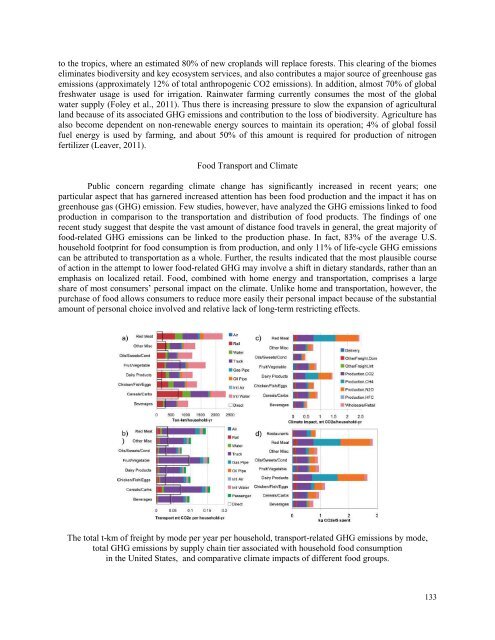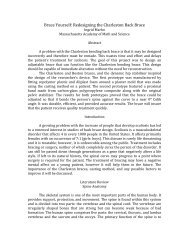Got Food? - the Scientia Review
Got Food? - the Scientia Review
Got Food? - the Scientia Review
You also want an ePaper? Increase the reach of your titles
YUMPU automatically turns print PDFs into web optimized ePapers that Google loves.
to <strong>the</strong> tropics, where an estimated 80% of new croplands will replace forests. This clearing of <strong>the</strong> biomes<br />
eliminates biodiversity and key ecosystem services, and also contributes a major source of greenhouse gas<br />
emissions (approximately 12% of total anthropogenic CO2 emissions). In addition, almost 70% of global<br />
freshwater usage is used for irrigation. Rainwater farming currently consumes <strong>the</strong> most of <strong>the</strong> global<br />
water supply (Foley et al., 2011). Thus <strong>the</strong>re is increasing pressure to slow <strong>the</strong> expansion of agricultural<br />
land because of its associated GHG emissions and contribution to <strong>the</strong> loss of biodiversity. Agriculture has<br />
also become dependent on non-renewable energy sources to maintain its operation; 4% of global fossil<br />
fuel energy is used by farming, and about 50% of this amount is required for production of nitrogen<br />
fertilizer (Leaver, 2011).<br />
<strong>Food</strong> Transport and Climate<br />
Public concern regarding climate change has significantly increased in recent years; one<br />
particular aspect that has garnered increased attention has been food production and <strong>the</strong> impact it has on<br />
greenhouse gas (GHG) emission. Few studies, however, have analyzed <strong>the</strong> GHG emissions linked to food<br />
production in comparison to <strong>the</strong> transportation and distribution of food products. The findings of one<br />
recent study suggest that despite <strong>the</strong> vast amount of distance food travels in general, <strong>the</strong> great majority of<br />
food-related GHG emissions can be linked to <strong>the</strong> production phase. In fact, 83% of <strong>the</strong> average U.S.<br />
household footprint for food consumption is from production, and only 11% of life-cycle GHG emissions<br />
can be attributed to transportation as a whole. Fur<strong>the</strong>r, <strong>the</strong> results indicated that <strong>the</strong> most plausible course<br />
of action in <strong>the</strong> attempt to lower food-related GHG may involve a shift in dietary standards, ra<strong>the</strong>r than an<br />
emphasis on localized retail. <strong>Food</strong>, combined with home energy and transportation, comprises a large<br />
share of most consumers‘ personal impact on <strong>the</strong> climate. Unlike home and transportation, however, <strong>the</strong><br />
purchase of food allows consumers to reduce more easily <strong>the</strong>ir personal impact because of <strong>the</strong> substantial<br />
amount of personal choice involved and relative lack of long-term restricting effects.<br />
The total t-km of freight by mode per year per household, transport-related GHG emissions by mode,<br />
total GHG emissions by supply chain tier associated with household food consumption<br />
in <strong>the</strong> United States, and comparative climate impacts of different food groups.<br />
133
















